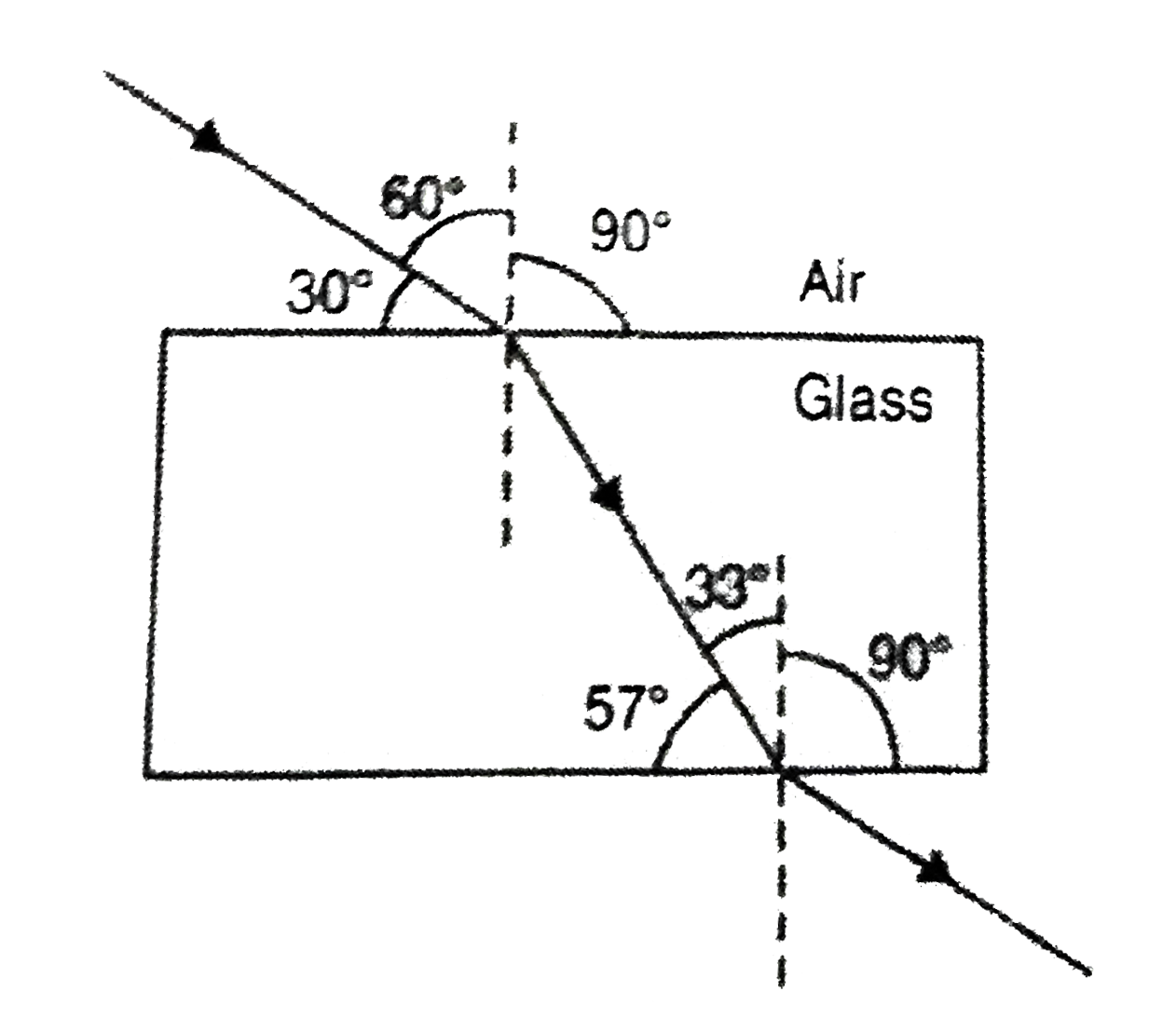Lateral displacement of ray passing through a glass slab
A ray of light is incident on a parallel sided glass slab of refractive index n and thickness t as shown in Fig. 34-2. Find the lateral displacement of the ray as it passes through the slab.
Video Solution
Text Solution
Once we apply Snell.s law, all we need to do is apply geometry to the problem. Let us start by drawing two triangles. From the second point from where the refracted ray enters back into air, we drop a perpendicular on the incident ray extended.
Calculation : From Snell.s law
1sinθ=nsinϕ
Here, we try to find the common hypotenuse (h) of both the triangle. From the definition of cosine and sine,
cosϕ=th⇒h=tcosθ
Also,
sin(θ−ϕ)=xh.
Here, x is the lateral displacement as is clear from the figure. Therefore,
x=tsin(θ−ϕ)cosϕ
Note : If you look at the stars in the sky, then appear to be twinkling. This is due to slight variation in refractive index which changes the lateral displacement of rays coming from them.

|
Updated on:21/07/2023
Topper's Solved these Questions
- BOOK - RESNICK AND HALLIDAYCHAPTER - GEOMETRICAL OPTICS : REFRACTIONEXERCISE - Check point6videos
GEOMETRICAL OPTICS : REFRACTION
- BOOK - RESNICK AND HALLIDAYCHAPTER - GEOMETRICAL OPTICS : REFRACTIONEXERCISE - Problems44videos
GEOMETRICAL OPTICS : REFRACTION
- BOOK - RESNICK AND HALLIDAYCHAPTER - GEOMETRICAL OPTICS : REFLECTION EXERCISE - PRACTICE QUESTIONS (Integer Type)3videos
GEOMETRICAL OPTICS : REFLECTION
- BOOK - RESNICK AND HALLIDAYCHAPTER - GRAVITATIONEXERCISE - PRACTICE QUESTIONS (INTEGER TYPE)4videos
GRAVITATION
Similar Questions
Knowledge Check
- Question 1 - Select One
A ray of light 10−9 second to cross a glass slab of refractive index 1.5. The thickness of the slab will be
A0.1 mB0.2 mC0.3 mD0.4 m - Question 2 - Select One
A ray of light is incident on a parallel slab of thickness t and refractive index n. If the angle of incidence θ is small, than the lateral displacement in the incident and emergent ray will be
Atθ(n−1)nBtθnCtθnn−1Dtθ(n+1)n - Question 3 - Select One
A ray of light is incident upon a parallel sided transparent slab of thickness 9 cm at an angle of incidence 60° • If the angle of refraction is 30°, the lateral displacement of the light ray is
A√3cmB3√3cmC3cmD2√3 cm
Lateral displacement depends on ______ of the glass slab.
View SolutionA ray of light suffers lateral displacement on passing through a parallel sided glass slab. What is the maximum possible value of lateral displacement ?
View SolutionMaximum lateral displacement of ray light incident on a slab of thickness t is
View SolutionA ray of light is incident on a parallel-sided glass slab as shown in the figure. The angle of refraction for this ray of light is likely to be :
 View Solution
View SolutionA ray of light is incident on a glass slab of refractive index 1.5, making an angle of 40∘ with the surface. The angle of refraction in glass is
View Solution
